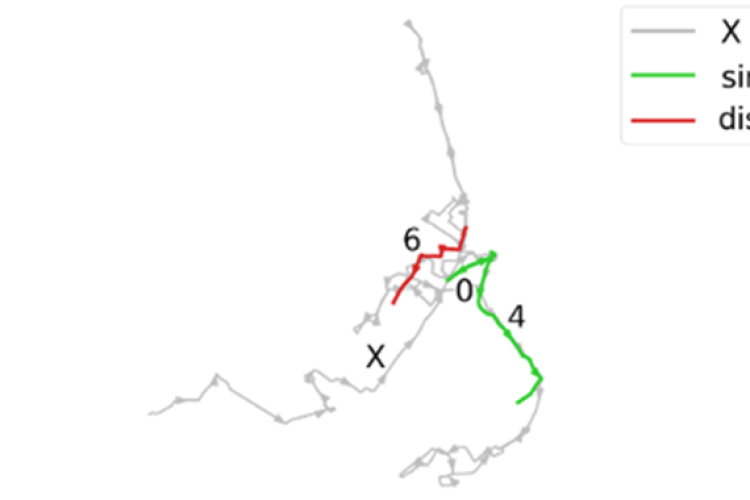Geolet simplifies complex mobility data and outperforms black-box models in terms of accuracy while being much faster. This innovation allows for more informed decisions in various domains like traffic management and disease control, thanks to its improved interpretability.

Reminiscences from the colloquium celebrating the 10 years of the RESET scientific journal
Authored by Michele Mazza (CNR-IIT)
Revised by Guglielmo Cola and Maurizio Tesconi (CNR-IIT)
Social media platforms are abused and misused, most commonly through fake accounts, giving rise to coordinated inauthentic behaviors (CIB). Even though efforts have been made to limit their exploitation, ready-to-use fake accounts can still be found for sale in a number of underground markets. In order to study the behavior of these accounts, we developed an innovative approach to detect and track accounts for sale.
In this article Andrea Pugnana explores selective classification in machine learning, introducing a novel heuristic for improving classifier performance. He also discusses the challenges of performance metrics and highlights future research directions.
The predictive performance of classifiers is typically not homogeneous over the data distribution. This is a common issue in Machine Learning. In fact, identifying sub-populations with low performance could be helpful, e.g., for debugging and monitoring purposes, especially in high-risk scenarios.

Introduction
Proper risk stratification of patients with differentiated thyroid cancer (DTC) is essential to avoid both unnecessary diagnostic procedures in low-risk patients and clinical inertia in cases that may require more aggressive treatment (1).
Author: Michele Gentili.
Chronic obstructive pulmonary disease (COPD) is a complex disease influenced by environmental exposures (most notably, cigarette smoking) and genetic factors. Genome-wide association studies have identified thousands of genomic regions associated with complex diseases. The chromosome 4q region harbors multiple genetic risk loci for chronic obstructive pulmonary disease (COPD). To determine whether genes in this region are part of a gene expression network, we studied lung tissue RNA-Seq from COPD cases and controls.
Author: Leonardo Martini, Sapienza University of Rome
Protein-Protein Interactions (PPIs) play an essential role in several biological processes. In many cases, proteins perform essential functions by interacting to constitute protein complexes. Identifying new Protein-Protein interactions is thus crucial in understanding cells' biological mechanisms.
